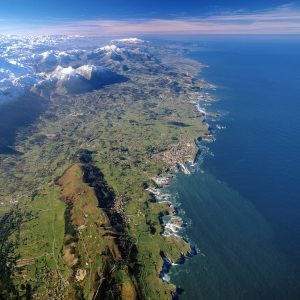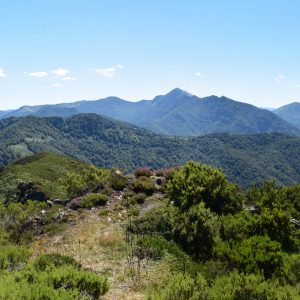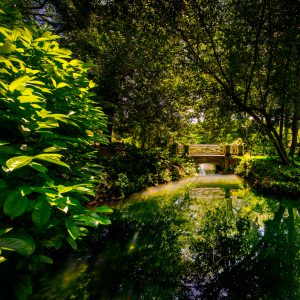Galium pyrenaicum
Conference excursions
Asturias is situated at the southwestern boundary of the deciduous temperate forest biome in Europe. The region hosts a high diversity of ecosystems, including coastal habitats, deciduous forests, evergreen woodlands, heathlands, hay meadows, mires and alpine grasslands.
Participants can choose one of the two one-day post-conference excursions offered for Saturday 10 September (Cantabrian Coast or Cantabrian Mountains). Registration will open on the pre-conference day at the Atlantic Botanic Garden, including a 2-hour guided tour.

The visit will take us to the protected landscapes of the eastern Asturian coast, a picturesque coastline formed by limestone cliffs, small beaches and woodlands. Coastal cliffs are current refugia for thermophile species that survived the glaciations, including remnant populations of wild olive trees (Olea europaea). The limestones of the Asturian coast are also covered by xerophytic shrubs with a Mediterranean flora in which the bay tree (Laurus nobilis) is locally abundant. We will also visit nearby spots of natural vegetation dominated by evergreen holm oak (Quercus ilex) on the driest sites, and by deciduous oak (Quercus robur) on mesic stands. Shady and humid creeks close to the coast host a rich Pteridophyte flora, including relict species from the Tertiary like the woolly tree fern (Culcita macrocarpa).

The Cantabrian Mountains run east-west in parallel to the coast and regularly reach elevations over 2,000 m, with the highest summit at 2,648 m. The prevailing NW winds coming from the Atlantic Ocean produce a steep bioclimatic gradient, with humid and oceanic north-facing slopes towards the coast and drier and continental south-facing slopes in the rain shadow. The flora of the Cantabrian Mountains includes c. 2,300 species and subspecies of vascular plants in a relatively small area (15,000 km2) as the result of a complex terrain and a key biogeographical position. Montane forests are dominated by beech (Fagus sylvatica) in the northern slopes and marcescent oak (Quercus pyrenaica) in the southern slopes, together with at least 10 different forest types described in the region. Above 1,700 m forests are naturally replaced by subalpine heathlands and brooms, followed by small fragments of alpine grasslands. A few valleys of the Cantabrian Mountains are also current refugia for Spanish juniper (Juniperus thurifera) and Scots pine (Pinus sylvestris).

The attendants who arrive to the city on Monday 5 (the day before the conference) will be offered guided tours to the Atlantic Botanic Garden followed by a welcome appetizer (included in the registration). The botanic garden is located close to the conference venue, forming the so-called “knowledge mile” together with the University campus and the Laboral City of Culture. The Atlantic Botanic Garden was inaugurated in 2003 as the first botanic garden in NW Spain, and it is currently the second most visited garden in the country. The favorable climatic conditions of the Asturian coast make this garden of 18 ha an exuberant collection of plants representing the floristic diversity of European and American shores of the northern Atlantic Ocean. Four main collections are focused on the Cantabrian Environment (natural plants communities of the Cantabrian mixed forest Ecoregion); the Plant Factory (an ethnobotanical journey on plants from both sides of the ocean); La Isla Garden (an historical garden from the 19th century); and the Atlantic Route (currently showing the biomes from Temperate Europe, Boral Europe and Boreal North America).


